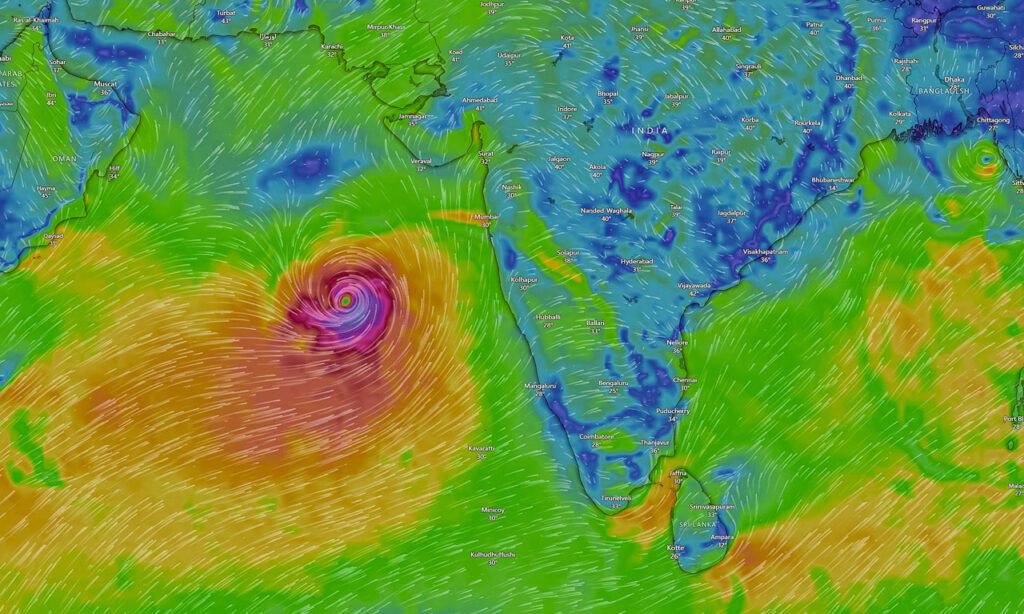‘Very Severe Cyclonic Storm’ Biparjoy, approaching India’s Southwest Coast, 9 June 2023.
Introduction
The annual June to September Southwest Monsoon brings much needed rainfall to the Indian sub-continent and neighbouring countries. Unfortunately, it also brings strong winds, flooding, property damage and death. This Risk Bulletin provides a reminder to all Members trading in South Asian Waters of the necessity to ensure their vessels and crews are well prepared to manage and minimise Southwest Monsoon hazards.
Background
The Southwest Monsoon is generated by high summer temperatures over arid land in Northern India which cause rising air and low pressure centres. The immediate result is a massive inrush of moist air from the lower temperature and, therefore, higher pressure areas over the adjacent Arabian Sea and Bay of Bengal. Strong winds from the southwest, together with heavy rainfall and flash flooding, then develop and predominate over the Indian sub-continent. The land areas and coastal waters of Pakistan, India, Sri Lanka and Bangladesh are directly impacted. Countries to the east, including Myanmar, Thailand, Cambodia and Vietnam, are also affected.
Even more hazardous is the Southwest Monsoon’s creation of tropical depressions and consequent cyclones in the Arabian Sea and the Bay of Bengal. These cyclones frequently result in catastrophic damage and heavy loss of life both ashore and at sea.
An extreme cyclone event example is provided by Cyclone Tauktae (winds to 185 kmph [100 knots] and seas to 10 m.), which, in mid-May 2021, passed close to an offshore oil field operation located west of the Port of Mumbai. Tauktae caused several work and accommodation barges and tugs to sink or ground and, tragically, left over 100 offshore workers and vessel crew dead or missing.
NOTE: The India Meteorological Dept. Monsoon FAQ webpage advises that the most intense cyclones initially occur during the pre-Southwest Monsoon (mid-April to end May) period. Cyclone formation then usually declines during June to August with cyclone frequency and intensity resuming during the post-Southwest Monsoon period (mid-September to mid-October).
Southwest Monsoon Forecast June to September 2024
During March 2024 the India Meteorological Department (IMD) forecast a 31% chance of an above normal 2024 Southwest Monsoon. This reflects an ever increasing Southwest Monsoon intensity and duration trend due to global climate change. Destructive strong wind and heavy rain impacts have already been experienced in Sri Lanka with a reported 38 people dead or missing and many homes flooded and destroyed.
The 2024 Southwest Monsoon advancement (from the Southeast to the Northwest of the Indian Sub-Continent) is depicted in an IMD colour map. It shows the Monsoon’s progression to the Northwest as being slightly ahead of the normal annual pattern.
Important for Members is that although the pre-Southwest Monsoon (mid-April to end-May 2024) period has passed, the post-Southwest Monsoon (mid-September to mid-October 2024) and its elevated cyclone danger period may well generate extreme weather events and cyclone threats to shipping.
Members are referred to the IMD Marine Forecast webpage, which provides comprehensive weather coverage by way of Fisherman Warnings, Port Warnings, Coastal Warnings (within 75 km./40 n.mi. of coast) and Sea Area Bulletins (over 75 km./40 n.mi. from coast) . If Tropical Depressions and possible Cyclones are formed, frequently updated bulletins – inclusive of Cyclone Tracking and Satellite Photos – are available from the IMD Cyclone Information webpage.
Members whose vessels trade in Indian Ocean and Southeast Asian waters are encouraged to visit the IMD website to familiarise themselves, their ship managers and masters with the information and early warning systems made available.
Members should also refer to both MM Risk Bulletin (RB) No. 54, Marine Weather Forecasts and Weather Avoidance: a matter of life and death and IMO MSC.1/Circ.1228, Revise Guidance to the Master for Avoiding Dangerous Situations in Adverse Weather Conditions.
Southwest Monsoon Weather Avoidance and Risk Management
All maritime hazard risks increase dramatically during heavy weather conditions. The best method of avoiding such risks (as described in RB 54) is to maintain a vigilant weather forecast watch. Masters must then, in accordance with both SOLAS and STCW or NCVS equivalent regulations, make prompt and positive adjustments to their passage plans to stay well clear of weather danger areas.
Note: Members are also referred to the US National and Oceanic Administration (NOAA) publication, ‘Mariners Tropical Cyclone Guide’, May 2023 Ed. This comprehensive, well-illustrated and updated 86 page guide is focused on cyclone storm development and avoidance in the northern hemisphere. However, the NOAA advice provided also extends to include the southern hemisphere and the Indian Southwest Monsoon (classified as the ‘North Indian Monsoon’ by NOAA at pg. 26)
Despite avoidance efforts, circumstances may occur in which vessels trading in Southwest Monsoon impacted areas may be unable to fully escape the associated weather conditions. In such circumstances, special attention should be paid by Members and their masters to the following risks and their management:
- Loss of Crew Overboard – Lifelines should be rigged along the full length of the maindeck. Crew should be instructed not to go onto the maindeck without the Master’s specific authority and notification of bridge OOW and then only after donning full PPE, inclusive of a lifejacket, radio, and safety harness which can be quickly and securely attached to the maindeck lifelines.
NOTE: See Code of Safe Working Practices for Merchant Seafarers (COWSP) 2015 Ed., Chap. 11, paras. 11.12.4 and 11.12.5 at page 129. - Vessel Sinking/Foundering – Ensuring the watertight and weathertight integrity of the vessel is paramount. All maindeck watertight doors and hatch accesses must be closed and door dogs well secured. All weathertight cargo hatches or cargo tank accesses must be fully secured. Special attention is required to ensure the anchor chains are well secured and their spurling pipe openings into the chain locker are cemented closed.
- On Deck and Under Deck Cargo Damage – Cargo carried On Deck, inclusive of containers, is the most susceptible to Monsoon weather damage. Special checks must be made of all deck cargo securing to ensure full compliance with SOLAS Regulations VI/5 and VII/6, the associated Cargo Stowage and Securing Code and the carrying vessel’s Cargo Securing Manual. Cargo stowed Under Deck must also be checked in a similar manner.
Cargo securing checks to both On Deck and Under Deck cargo are essential to prevent cargo damage as well as cargo shifting with consequent vessel listing, water ingress and consequent foundering.
NOTE: Deck cargoes of timber are particularly susceptible to heavy weather dislodgement of lashings followed by cargo shifting and dangerous vessel listing. Members are referred to the UK MCA’s Marine Information Note 560 Load Line Convention 1966 as amended at Reg. 25, Protection of the Crew and Reg. 44, Stowage, together with the IMO’s Code of Practice for Ships Carrying Timber Deck Cargo 2011. - Cargo Liquefaction – The serious dangers of IMSBC Code, Group A cargoes which may liquefy, are well known. Southwest Monsoon weather provides a dangerous combination of two underlying causes:
- First is that Group A cargo stockpiles at Monsoon affected load port countries (e.g. India and Malaysia) can be subjected to Monsoon heavy rainfall and consequent high levels of Group A cargo moisture exceeding Transportable Moisture Limit (TML) requirements.
- Second is that subsequent vessel pitching and vibration, as caused by Monsoon heavy seas and swell, can accelerate the liquefaction process and potential vessel capsize.
NOTE: Members whose vessels are engaged in carrying Group A bulk cargoes are referred to Club RB No. 12, Death by Bulk Cargo Liquefaction: Don’t Become a Statistic and RB No. 58, Bulk Carrier Operation: No Room for Complacency. - Anchor Dragging Causing Collision or Grounding – The anchorage risks referred to are increased significantly during Southwest Monsoon conditions. Consequences include collision with surrounding vessels or grounding with resulting ship damage, oil pollution claims, and potential injury or crew deaths.
Members must ensure enhanced Southwest Monsoon compliance with STCW anchor watch requirements as provided by Chap. VIII, Sec. A-VIII/2, Part 3-1. Para. 51 of the STCW Code. Members are referred to the Singapore MPA’s Port Marine Circular No. 03 of 2021, which provides full details of the STCW stipulated precautions required, inclusive of the STCW copy text. - Port Blockage and/or Damage to Infrastructure – The risks referred to are again increased significantly during Southwest Monsoon conditions. Consequent damage and delay claims can be very large with resulting vessel arrest, extended detention and loss of charter revenue.
Members must ensure close attention to all port authority directives relating to Southwest Monsoon conditions. An example is India’s Mormugao Port Authority Marine Dept. Harbour Notice No. 03 (Temp) 2024. This sets out detailed directions on vessel manning, mooring ropes, berthing areas, barge loading restricted to 2/3rds capacity and special trimming requirements, and attention to weather conditions and port signals. Similar directives can be found on the websites of other ports affected by Southwest Monsoon conditions, and local ship agents should also be consulted.
Conclusion and Takeaway
The Southwest Monsoon is an annual weather phenomenon with a history stretching back thousands of years. It continues to occur during June to September each year, but its duration and strength now appear to be intensified by global warming. Yes, it brings beneficial rains. But also, the risk of destruction and death to both land dwellers and their property and mariners and their ships.
Members must ensure special Southwest Monsoon precautions are taken by their ship managers and masters, inclusive of extraordinary measures during the pre-Monsoon (mid-April to end-May) and post-Monsoon (mid-September to mid-October) periods when cyclone activity is at its peak.
For Members whose vessels trade in Southwest Monsoon affected areas, these precautions should include but are not limited to the following MM recommendations:
- DPAs, ship managers and masters should all review and confer together to ensure that ISM Code SMS Manuals and Procedures include clear advice on Southwest Monsoon hazards, avoidance techniques and precautions, inclusive of specific reference to related SOLAS Regulations, Load Line Regulations, STCW Code Requirements, COWSP Recommendations and the NOAA Guide.
- Consideration should be given to assisting masters by either engaging a commercial weather forecasting and route planning service provider or installing weather routing software on board to supplement public (e.g. IMD) weather forecasts and warnings.
- Voyage Planning data for passages into waters affected by the Southwest Monsoon should preferably be transmitted to ship managers well in advance of voyage commencement for marine superintendent/fleet routing officer review and approval.
- Arrangements should be made for either in-house or private service provider acquisition and twice daily monitoring of fleet AIS data to ensure all vessels are navigating in accordance with approved Voyage Planning and any subsequent route changes made to avoid Southwest Monsoon weather conditions.
- Arrangements should be made to ensure all masters are aware and in possession of all Southwest Monsoon port authority directives as issued for the ports they are scheduled to enter or may need to enter as a port of refuge.


